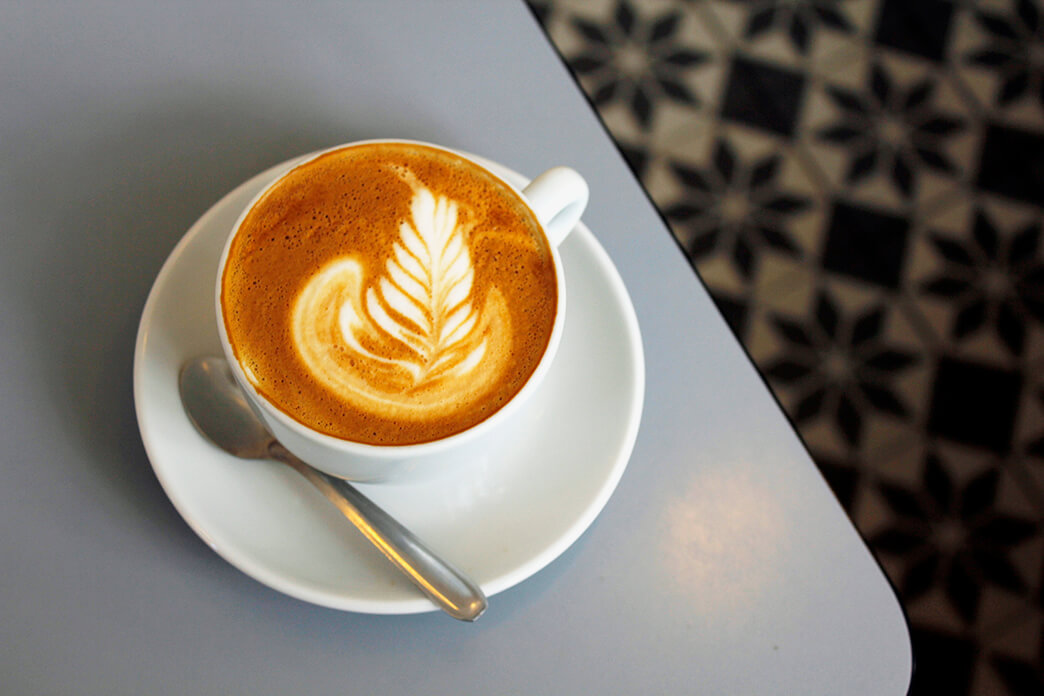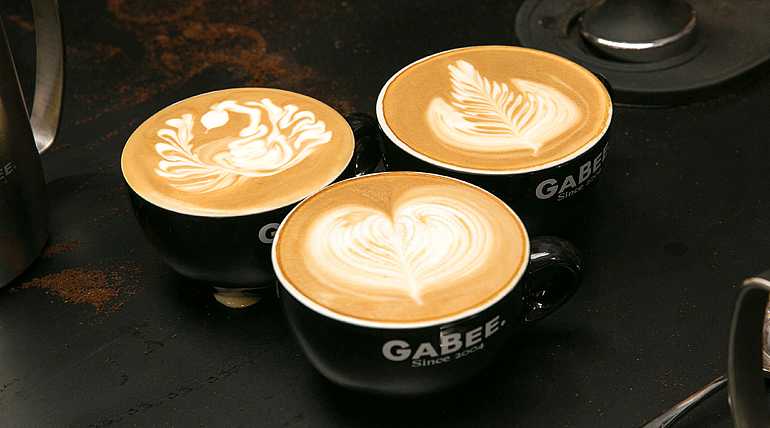What kind of coffee are you drinking? ─ Commercial Coffee, Fair Trade, Fine Coffee

For professional baristas, please follow the coffee workshop (Wechat official account cafe_style)
When it comes to coffee, Starbucks with a green mermaid always makes a vivid impression on most people. Even people who are not in the habit of drinking coffee may still have a cup at buy one get one free. Maybe we don't know if this kind of coffee is delicious, or whether it's worth the bitter juice on our hands. However, the author believes that most young people nowadays still drink such a cup at some time and drink these black juices consciously or unconsciously.
High-end coffee
Before swallowing this coffee, has anyone ever wondered what kind of production mode it takes to produce enough coffee beans to supply more than 21000 stores around the world? Here, the author must mention a noun-── "commercial coffee beans". The so-called commercial coffee beans, is completely based on commercial interests for the consideration of the production of coffee beans, it is conceivable that such coffee beans must want to maximize benefits and reduce costs as much as possible. At this point, a question is bound to arise, that is, "where is the cost reduced?" "
The first to bear the brunt must be the coffee farmers in the coffee-producing countries. In fact, almost all coffee beans are produced in countries in the Tropic of Cancer, and most of the producing countries are poorer agricultural countries, especially small coffee farmers, without technology, exquisite equipment and marketing pipeline. can only wait for the acquisition of large-scale manufacturers with large processing plants and export rights. Often these purchase prices are out of proportion to the production costs of coffee farmers, but even so, small coffee farmers have no other channels to sell coffee if they are not sold to large players. Low coffee prices make the governments of producing countries more encourage coffee production, the result of the cycle is that the quality of coffee is low, prices are vulnerable to international fluctuations, and excess coffee leads to no profit at all.
Let's talk again about the effect of time on roasted coffee. The vast majority of Starbucks coffee is roasted from four bakeries, three in the United States and one in the Netherlands, and months have passed when the roasted coffee is transported to markets around the world. Most people have no idea about the shelf life of coffee, which is also misled by large commercial coffee. In fact, the quality of roasted coffee beans will decline significantly after more than a month, all the aroma substances and internal gases will volatilize, and the internal aroma substances and lipids will begin to deteriorate. By the time it comes into our mouth, it has already gone completely out of taste, just because we seldom have a chance to drink real fresh coffee, so we don't know that Starbucks coffee is not fresh at all.
Then there is the selection of coffee beans, not all of the harvested coffee beans are suitable for baking and eating, often accompanied by moth-eaten beans, moldy beans, unripe beans, festered beans, usually these beans have a very bad taste, and may be toxic. In commercial coffee beans, this kind of fruit will be more special, because commercial coffee is harvested in large quantities, no matter ripe beans or unripe or rotten fruits. All of them are caught in one net, and the selection process is also very hasty, and the quality of coffee beans is greatly reduced. According to some surveys, 30% of commercial beans are substandard.
It is conceivable that commercial coffee beans are not high-end goods, nor will they be the fragrant and mellow coffee we imagined. The illusion of all these is just misleading caused by layers of commercial packaging.
Fair Trade, where is Fair Trade?
Under layers of exploitation and squeeze, the concept of fair trade came into being, and at the same time promoted the development of Fair Trade Organization. Fairtrade tries to obtain reasonable wages for workers, provide subsidies for local community construction and integrate the concepts of sustainable management and environmental protection, hoping to improve the quality of life of farmers. It is true that Fairtrade has improved some coffee farmers, but the big problem is that Fairtrade is not mandatory and can only be used as a certification label at best, that is, it is not usually large enterprises that buy Fairtrade coffee. the workers squeezed by enterprises still cannot get economic improvement.
Although Starbucks signed a covenant with TransFair USA, a member of the International Fair Trade Volume Organization, in April 2000, the coffee beans used in the store and the coffee beans sold on the shelves are still rare fair trade certification signs, and although it is fair trade, the purchase price is still a minimum guarantee, one pound of fair trade coffee raw beans (0.45kg). The price of about 300 grams of coffee is less than US $2.5, but a Starbucks latte (15g powder) costs NT $120. Is this profit reasonable? It can be seen that Fairtrade coffee is just another means that Starbucks uses in reverse as a commercial marketing.
Nestl é also launched the so-called Fair Trade Coffee brand in 2006, but it is also a company that uses Fairtrade as its corporate image and promotional tool. The production of fair trade coffee in Nestle is less than 10%, and the price of its final product is also very "unreasonable". It can be seen that for Nestl é, Fairtrade coffee is only a means to cover the eyes and ears of consumers and quell the storm of labour exploitation.
Boutique? business?
Compared with commercial coffee beans, the birth of boutique coffee is a reaction to commercial coffee. Some people reject such crude, tasteless drinks, so the term boutique coffee was coined by Erna Knutsen in 1975, followed by the American Fine Coffee Association (SCAA) in 1982. In 1999, the bidding for the COE Cup was also launched with the boutique coffee.
SCAA has established the standard for the flavor of coffee, and developed a scientific theory for the extraction of coffee, which is also of great help to the study of flavor and coffee. At the same time, it means that coffee is no longer just a commercial product that is randomly squeezed and exploited, but is gradually transformed into a commodity with various flavor characteristics. The research team visited coffee producing areas to improve the planting methods of coffee farmers and improve the processing equipment. So that good coffee can be sold at dozens of times the price of the commercial coffee market. The "cooperatives" helped to set up in the producing areas allow coffee farmers to raise their own funds to become committee members, and are no longer controlled by enterprises. The most famous is the Yegashafi producing area in Isopia. In recent years, a large number of cooperatives have sprung up, not only to improve the quality of coffee, but also to raise the price of coffee. COE's international bidding has even made some coffee a luxury.
The wave of boutique coffee has swept Taiwan in the past five years, which means that we can no longer only drink commercial coffee that is not good and bitter but not fresh. The wave of boutique coffee has awakened the popularity of our own baking, and even made the flavor of the same kind of beans appear in different styles. And led by the wave of boutique coffee, growing coffee has become a more professional job, coffee farmers are no longer only cheap labor, they are more likely to become agricultural technicians.
In Taiwan, there are the Taiwan International Coffee Exchange Association (TISCA) and the Taiwan Coffee Association. To promote the development of coffee in Taiwan, not far from the back door of CUHK, there are two coffee roasters where the price of a cup of boutique coffee is lower than that of Starbucks, but it brings a fresher, more lively taste experience and tastes better at the same time.
Before you swallow the coffee liquid, please think about what we want to drink ── We drink is a cup of coffee, is to bring us a relaxed and pleasant drink, it should not be bitter juice, but a bright jump in the tip of the tongue drink. The author is not here to criticize commercial coffee, but hope to provide you with more ideas about coffee, as well as more and better options besides Starbucks.
Important Notice :
前街咖啡 FrontStreet Coffee has moved to new addredd:
FrontStreet Coffee Address: 315,Donghua East Road,GuangZhou
Tel:020 38364473
- Prev

What kind of experience is it to learn to pull flowers from Mr. Lim Dong-Won, the master of coffee?
Professional barista communication Please follow the coffee workshop (Wechat official account cafe_style) I like coffee, but one day I did not expect to go to the [coffee master-Lim Dong-Won teacher] pull flower course, so happy! Lim Dong-Won is very famous in the coffee industry, often participating in domestic and foreign coffee flower competitions to win awards, but also opened a GABEE in Taiwan. Coffee shop. People who like to drink coffee often go there.
- Next

[admiring] A 17-year-old Daphne Tan from Singapore has a 3D flower pull.
Professional barista communication please follow the coffee workshop (Wechat official account cafe_style) today to share with you a group of 17-year-old Daphne Tan from Singapore 3D pull flowers! Please look carefully and don't talk.
Related
- Selected high-grade rose summer coffee flavor tasting guide Why Panama rose summer has the aroma of flowers and fruits
- What equipment does a novice Xiaobai need to buy to learn to make coffee? Filter cup electronic scale bean grinder manual flushing pot purchase guide
- Stores are closed one after another! Centenary Italian coffee brand Lavazza will withdraw from the Changsha market?!
- Tea Beauty will open a store in Shanghai and Shenzhen?! Netizen: Change the write-off mechanism first
- Fake news! Mixue Ice City employees insulted HR and smashed the store?!
- Bawang Tea Lady employees "Hand-made milk tea" is on a hot search! Official emergency response
- What's the difference between Robusta and Arabica coffee? What parameters and proportions do you use to grind the water temperature for making hand-brewed coffee?
- Do I have to use pure milk ice bok to make Dirty coffee? What is the difference between Italian milk dirty coffee Dirty and latte and white cappuccino?
- Orange chocolate latte making ratio parameters and formula sharing! Winter special latte milk espresso recommended!
- How does the degree of roasting of coffee beans determine? What is the difference between espresso beans and hand-brewed coffee beans? Is it better to roast Huakui coffee in the medium or lightly roast it?

